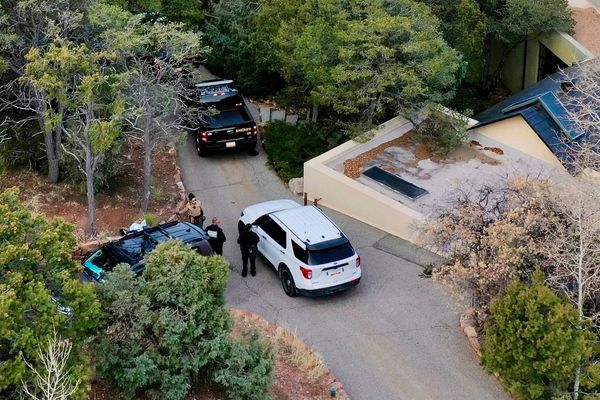
Before being appointed as the Australian Capital Territory’s inaugural Aboriginal and Torres Strait Islander children and young people commissioner, I had witnessed first-hand the national epidemic of violence against women. As a survivor of forcible removal, I can sadly observe that we are still failing in our efforts to curb it. My time in this position has only reinforced this realisation.
I have witnessed all aspects of gender-based violence. But what continues to shatter my whole being is the disproportionate rate of gender-based violence that continues to affect Aboriginal women, children and young people.
Aboriginal women and families continue to be subject to the most horrific forms of violence. And when reaching out for support and safety, they risk having their children removed by the state. While there has been a powerful coming together over the number of women killed so far this year at the hands of a partner, we must also look at the role the state plays in furthering violence for First Nations victims. It is imperative that we get it right, both for those who have lost their lives and those who have survived.
I was among the many who participated in rallies, inspired by the collective calls for justice. But I notice a glaring silence when it comes to murdered and missing Aboriginal women and children. If I am being honest with you, this is the alarming experience of Aboriginal women in Australia.
Through my work, I consistently witness the state’s failure to protect children and young people, as well as the inadequacy of preventive measures to address the risks posed by perpetrators. Children living in statutory out-of-home care are more vulnerable to coercion. Our children and young people are at a higher risk of trafficking, online sexual abuse, violence and other forms of abuse after leaving or while in care. I worry about the society in which my daughter is growing up.
Gender-based violence has a pervasive impact, particularly on women and marginalised communities. Removing children from their families can further perpetuate harm instead of addressing root causes of violence or providing support for parent-survivors. As commissioner my duty is to advocate and fight for their protection, which includes being with their kin, a safe family. Instead of relying solely on punitive measures, it is crucial to establish comprehensive support systems for survivors, including access to trauma-informed care, counselling, legal supports, safe spaces for children and young people and financial resources to ensure their wellbeing.
To address the national crisis of gender-based violence, a multifaceted approach considering intersections of race, gender, class, sexuality and other identities is essential. We do not need another inquiry, or report, while more lives are taken. We need strategic, coordinated, practical solutions. The status quo represents a grave injustice that fails to take First Nations women, children, young people and survivors seriously. Some appropriate responses to combating the epidemic of gender-based violence include but are not limited to:
1. Implementing comprehensive prevention programs that educate the public about healthy relationships, consent and bystander intervention.
2. Increasing funding for support services, such as appropriate accommodation, hotlines, counselling, recovery assistance and independent legal support for survivors.
3. Adequate long-term funding for organisations to provide support to communities and families – this includes supporting Aboriginal community-controlled health organisations and getting creative with resource provisions.
4. Addressing the online epidemic of harm to children and young people by investing in technology and advancements that protect their digital safety and prevent exploitation.
5. Providing training for professionals in various sectors, including community responses, healthcare and education, to identify and respond to instances of gender-based violence effectively.
6. Promoting gender equality and challenging harmful stereotypes that contribute to violence and discrimination.
7. Implementing urgent systemic and frontline practice changes that allow for parents and children to be supported together. This means when there is violence identified, the child is not subject to forcible removal alone, but rather the parent-survivor and child are supported together.
By centring the experiences of survivors and acknowledging the impacts of racism, sexism, classism and other forms of oppression, we can strive towards a more inclusive and effective response to gender-based violence. It is crucial to prioritise survivor-centred approaches that do not do more harm and implement urgent early intervention and prevention mechanisms that empower individuals to be appropriately supported, access resources, ensure accountability of perpetrators and end violence, in all forms.
We do not have time to wait. When our leaders meet in cabinet on Wednesday, I hope my people are not left out of the conversation when it comes to urgent responses on the ground. Today is a day that real action can be supported with appropriate investment for all.
Vanessa Turnbull-Roberts is the ACT Aboriginal and Torres Strait Islander children and young people commissioner







